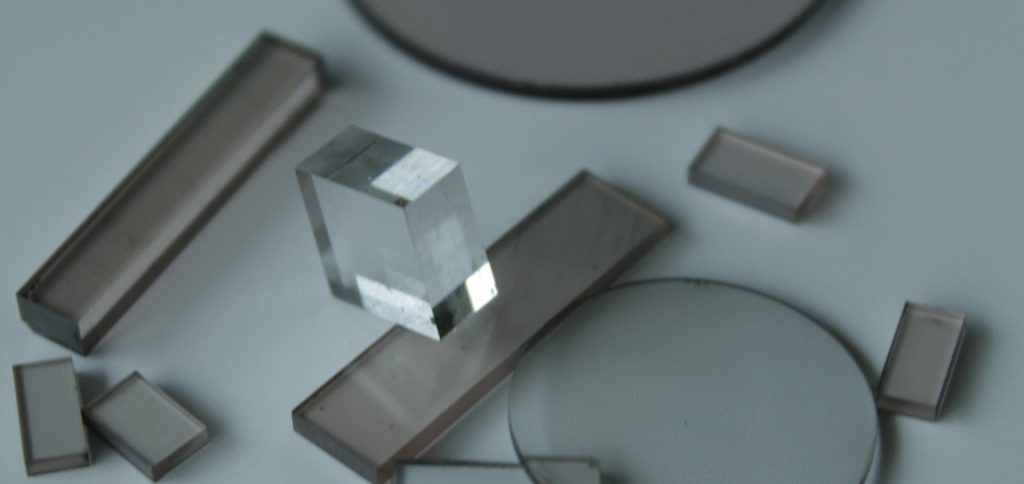Applications of diamonds with different crystal structures

A natural diamond requires carbon atoms to be born at a depth of 150-200 kilometers underground and undergo hundreds of millions of years of high temperature and pressure. To appear in front of people, it must continue to be brought to the surface of the earth by geological movements over time. , it can be said to be very scarce. So by simulating the crystallization conditions and growth environment of natural diamonds, people used scientific methods to synthesize artificial diamonds that also have excellent properties such as super hardness, wear resistance, and corrosion resistance, shortening the synthesis time of diamonds to more than ten days or even a few days. Synthetic diamonds are divided into single crystals and polycrystals. They each have unique crystal structures and characteristics, making them different in applications.
1. Single crystal diamond
Single crystal diamond is a crystal bound by covalent bonds with saturation and directionality. It is the most common type of diamond crystal. The particles inside the crystal are regularly and synchronically arranged in three-dimensional space, with few defects. , without grain boundary restrictions, so it has outstanding advantages in thermal conductivity, hardness, light transmittance and electrical properties.
Thermal conduction applications
The thermal conductivity of diamond basically comes from the propagation of carbon atom vibrations (that is, phonons). Impurity elements, dislocations, cracks and other crystal defects in diamond, residual metal catalysts, lattice orientation and other factors will collide with phonons. It scatters, thereby limiting the mean free path of phonons and reducing thermal conductivity. Single crystal diamond has a highly ordered lattice structure, which makes it almost unaffected by grain boundary scattering. Therefore, it has a thermal conductivity of up to 2200 W/(m·K).
Optical applications
High-quality single crystal diamond prepared by the CVD method can be completely colorless and transparent, with almost no impurities. Its highly ordered crystal structure also prevents light from being interfered by structural irregularities when propagating in the crystal, thus showing Produce more excellent optical performance.
Cutting applications
The microhardness of single crystal diamond tools is as high as 10000HV, so it has good wear resistance. Since the cutting edge of single crystal diamond can achieve atomic level straightness and sharpness, the perfect cutting edge can be copied directly onto the workpiece during cutting to produce a mirror surface with extremely smooth finish, ensuring extremely high dimensional accuracy. , and can maintain the tool life and stable performance under high-speed cutting and heavy load. It is suitable for ultra-thin cutting and ultra-precision machining.
Grinding and polishing
Single crystal diamond has good dispersion and higher utilization rate of sharp corners. Therefore, when it is prepared into a grinding liquid, the concentration is much lower than that of polycrystalline diamond, and its cost performance is relatively high.
2. Polycrystalline diamond
The structure of polycrystalline diamond is composed of many tiny nanometer-sized particles bonded through unsaturated bonds, which is very similar to natural black diamond (natural polycrystalline diamond with black or dark gray as the main color).
Semiconductor field
As semiconductor materials, the application directions of diamond polycrystalline and single crystal materials are quite different. The optical and electrical properties of polycrystalline diamond are not as good as those of single crystal diamond. The application of optical grade and electronic grade polycrystalline diamond films is relatively demanding. The preparation requires ideal deposition rate and extremely low or controllable defect density.
Grinding and polishing
Since the polycrystalline diamond grains do not need to be arranged, the micro-fractures produced when subjected to high pressure can be limited to a small range of microcrystals, without large cleavage plane fractures, and have good self-sharpening properties, so they are allowed to be ground during grinding. And use higher unit pressure when polishing.
Cutting tools
Compared with large single crystals of diamond, the disordered crystal structure of polycrystalline diamond gives it more impact resistance and is less likely to crack during cutting.
